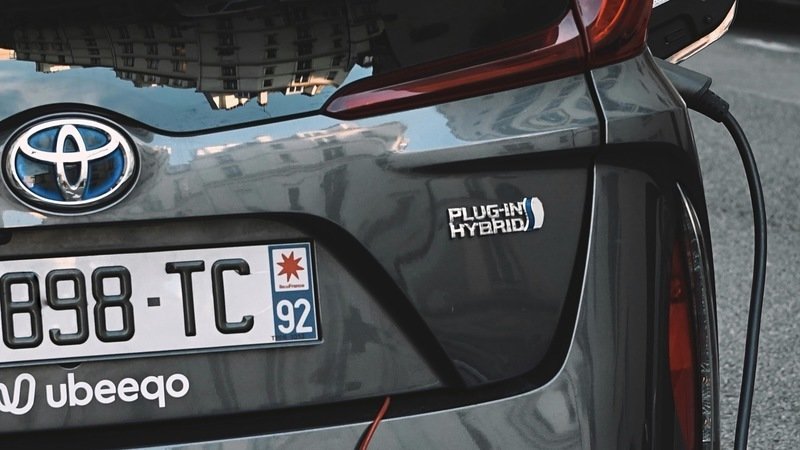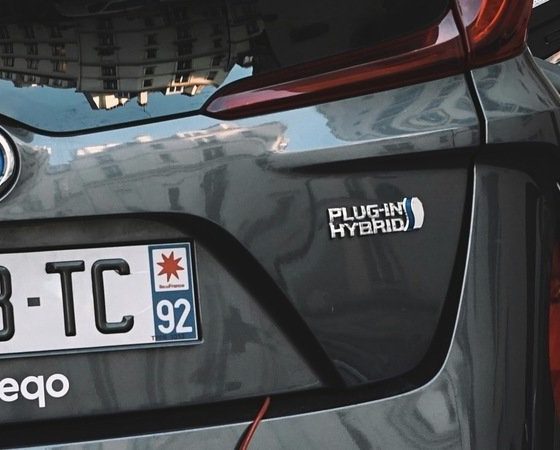

News
Inflation Reduction Act supports dealerships & fossil fueled “clean vehicles”
Today, the Senate passed the Inflation Reduction Act which seems like a good thing for EVs and clean energy at first. However, a look at the bill itself takes us into a rabbit hole that smells of fossil fuels and dealership lobbying.
By changing the very definition of electric vehicles of clean vehicles, the Inflation Reduction Act is showing its support for fossil fuels. Let’s take a look at a thread shared by @WholeMarsBlog who took a deep dive into the Inflation Reduction Act.
How Dealerships benefit from the Inflation Reduction Act
As @WholeMarsBlog pointed out in his thread, the Inflation Reduction Act will allow dealerships to benefit from a subsidy. If a consumer purchases an EV from a dealership, they will be able to transfer that tax credit to a dealership.
This will be the only way they can benefit from that tax credit as direct-to-consumer doesn’t qualify.
This gives dealerships an edge over direct-to-consumer sales by allowing consumers to receive a lower monthly payment than ordering directly from a manufacturer such as Tesla or Rivian.
However, it doesn’t make sense to subsidize an industry that is known for dishonest tactics and treating American consumers badly.
Allowing fossil-fueled vehicles to be “clean vehicles”
A vehicle with an internal combustion engine and a small battery is now considered a “clean vehicle” by this bill. Plug-in hybrid EVs have been touted as a cleaner version of the ICE vehicle because it has a battery and can be charged.
However, these are still fossil-fueled powered vehicles and discourage the sales of actual clean vehicles. As @WholeMarsBlog said, “Why buy an F-150 Lightning when an F-150 hybrid qualifies, too?” He also pointed out that hydrogen cars are also now subsidized.
Battery Minerals need to be sourced domestically
This is done in a very tricky way to make it look like the EV tax credit is being extended, but in reality fossil fuel powered hybrids will qualify while electric vehicles will not.
this is so wrong. if people don't plug in these cars they generate MORE emissions due to weight
— Whole Mars Catalog (@WholeMarsBlog) August 7, 2022
Rivian and Lucid along with other automakers will lose their $7,500 tax credit next year due to these battery sourcing requirements making it impossible for any full EV to qualify.
This is why it’s so important for automakers to partner with their domestic suppliers. Talon Metals’ Chief External Affairs Officer & Head of Climate Strategy, Todd Malan spoke with me at length on this topic and you read his thoughts here.
Benchmark Minerals’ take on the Inflation Reduction Act
Interesting commentary on the Inflation Reduction Act from @sdmoores https://t.co/Ma5fFElNjv pic.twitter.com/ePZMHVSX5a
— The Limiting Factor (@LimitingThe) August 7, 2022
Benchmark Minerals published an article on what the Inflation Reduction act means for the EV battery supply chain and I think it’s important to consider some of the points they’ve made.
Simon Mores, CEO of Benchmark said that it’s almost impossible that any of the Fair Trade Alliance countries are able to fill China’s raw material gap for our EV demand between now and 2024.
“The presently proposed $7,500 credit for those EVs that do not contain any critical minerals from China or Russia will effectively be made redundant, considering the proposal ends in 2024 just when a domestic supply chain is beginning to gain momentum.”
“It is almost impossible that any Fair Trade Alliance countries – of which Australia and Chile are the stand out – could fill China’s raw material gap for the USA’s EV demand between now and 2024.”
“This is considering the basic lack of raw material supply in many markets and the fact that most future raw material has already been contracted and accounted for.”
“If the US wants the incentive to really work, it needs to extend this by 4 years to 2028 so the battery supply chain builds into the incentive.”
With this thought in mind, @WholeMarsBlog pointed out that smaller batteries could meet the percentage requirements while larger batteries powering the entire vehicle can not. In other words, this opens the door for plug-in hybrid EVs to meet the rising demand for clean vehicles.
My 2.5¢
I think it’s important to note these flaws in the bill, but I also think that we do need a stronger U.S. battery supply chain. However, we shouldn’t sacrifice EVs for fossil fuels to get that stronger supply chain.
I’ve always thought that it was silly to include plug-in hybrid vehicles as a “clean vehciel” when they use both batteries and fossil fuels. Hybrids are great for those who want both options. I’ve also heard the arguments that they are more affordable than a Tesla, but it’s 2022 and if someone is in the market for a new car, there are options for a variety of EVs.
I think @WholeMarsBlog made an excellent point. I think Todd Malan made excellent points as well. At the end of the day, however, politricksters will politrick. The fact that they all agreed on this bill is, I think, kind of shocking.
Disclaimer: Johnna is long Tesla.
I’d love to hear from you! If you have any comments, concerns, or see a typo, you can email me at johnna@teslarati.com. You can also reach me on Twitter @JohnnaCrider1

News
Tesla FSD fleet is nearing 7 billion total miles, including 2.5 billion city miles
As can be seen on Tesla’s official FSD webpage, vehicles equipped with the system have now navigated over 6.99 billion miles.

Tesla’s Full Self-Driving (Supervised) fleet is closing in on almost 7 billion total miles driven, as per data posted by the company on its official FSD webpage.
These figures hint at the massive scale of data fueling Tesla’s rapid FSD improvements, which have been quite notable as of late.
FSD mileage milestones
As can be seen on Tesla’s official FSD webpage, vehicles equipped with the system have now navigated over 6.99 billion miles. Tesla owner and avid FSD tester Whole Mars Catalog also shared a screenshot indicating that from the nearly 7 billion miles traveled by the FSD fleet, more than 2.5 billion miles were driven inside cities.
City miles are particularly valuable for complex urban scenarios like unprotected turns, pedestrian interactions, and traffic lights. This is also the difference-maker for FSD, as only complex solutions, such as Waymo’s self-driving taxis, operate similarly on inner-city streets. And even then, incidents such as the San Francisco blackouts have proven challenging for sensor-rich vehicles like Waymos.
Tesla’s data edge
Tesla has a number of advantages in the autonomous vehicle sector, one of which is the size of its fleet and the number of vehicles training FSD on real-world roads. Tesla’s nearly 7 billion FSD miles then allow the company to roll out updates that make its vehicles behave like they are being driven by experienced drivers, even if they are operating on their own.
So notable are Tesla’s improvements to FSD that NVIDIA Director of Robotics Jim Fan, after experiencing FSD v14, noted that the system is the first AI that passes what he described as a “Physical Turing Test.”
“Despite knowing exactly how robot learning works, I still find it magical watching the steering wheel turn by itself. First it feels surreal, next it becomes routine. Then, like the smartphone, taking it away actively hurts. This is how humanity gets rewired and glued to god-like technologies,” Fan wrote in a post on X.
News
Tesla starts showing how FSD will change lives in Europe
Local officials tested the system on narrow country roads and were impressed by FSD’s smooth, human-like driving, with some calling the service a game-changer for everyday life in areas that are far from urban centers.

Tesla has launched Europe’s first public shuttle service using Full Self-Driving (Supervised) in the rural Eifelkreis Bitburg-Prüm region of Germany, demonstrating how the technology can restore independence and mobility for people who struggle with limited transport options.
Local officials tested the system on narrow country roads and were impressed by FSD’s smooth, human-like driving, with some calling the service a game-changer for everyday life in areas that are far from urban centers.
Officials see real impact on rural residents
Arzfeld Mayor Johannes Kuhl and District Administrator Andreas Kruppert personally tested the Tesla shuttle service. This allowed them to see just how well FSD navigated winding lanes and rural roads confidently. Kruppert said, “Autonomous driving sounds like science fiction to many, but we simply see here that it works totally well in rural regions too.” Kuhl, for his part, also noted that FSD “feels like a very experienced driver.”
The pilot complements the area’s “Citizen Bus” program, which provides on-demand rides for elderly residents who can no longer drive themselves. Tesla Europe shared a video of a demonstration of the service, highlighting how FSD gives people their freedom back, even in places where public transport is not as prevalent.
What the Ministry for Economic Affairs and Transport says
Rhineland-Palatinate’s Minister Daniela Schmitt supported the project, praising the collaboration that made this “first of its kind in Europe” possible. As per the ministry, the rural rollout for the service shows FSD’s potential beyond major cities, and it delivers tangible benefits like grocery runs, doctor visits, and social connections for isolated residents.
“Reliable and flexible mobility is especially vital in rural areas. With the launch of a shuttle service using self-driving vehicles (FSD supervised) by Tesla in the Eifelkreis Bitburg-Prüm, an innovative pilot project is now getting underway that complements local community bus services. It is the first project of its kind in Europe.
“The result is a real gain for rural mobility: greater accessibility, more flexibility and tangible benefits for everyday life. A strong signal for innovation, cooperation and future-oriented mobility beyond urban centers,” the ministry wrote in a LinkedIn post.
News
Tesla China quietly posts Robotaxi-related job listing
Tesla China is currently seeking a Low Voltage Electrical Engineer to work on circuit board design for the company’s autonomous vehicles.

Tesla has posted a new job listing in Shanghai explicitly tied to its Robotaxi program, fueling speculation that the company is preparing to launch its dedicated autonomous ride-hailing service in China.
As noted in the listing, Tesla China is currently seeking a Low Voltage Electrical Engineer to work on circuit board design for the company’s autonomous vehicles.
Robotaxi-specific role
The listing, which was shared on social media platform X by industry watcher @tslaming, suggested that Tesla China is looking to fill the role urgently. The job listing itself specifically mentions that the person hired for the role will be working on the Low Voltage Hardware team, which would design the circuit boards that would serve as the nervous system of the Robotaxi.
Key tasks for the role, as indicated in the job listing, include collaboration with PCB layout, firmware, mechanical, program management, and validation teams, among other responsibilities. The role is based in Shanghai.
China Robotaxi launch
China represents a massive potential market for robotaxis, with its dense urban centers and supportive policies in select cities. Tesla has limited permission to roll out FSD in the country, though despite this, its vehicles have been hailed as among the best in the market when it comes to autonomous features. So far, at least, it appears that China supports Tesla’s FSD and Robotaxi rollout.
This was hinted at in November, when Tesla brought the Cybercab to the 8th China International Import Expo (CIIE) in Shanghai, marking the first time that the autonomous two-seater was brought to the Asia-Pacific region. The vehicle, despite not having a release date in China, received a significant amount of interest among the event’s attendees.








